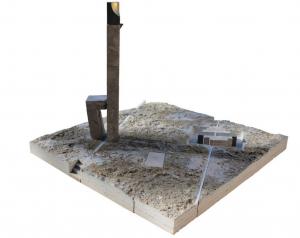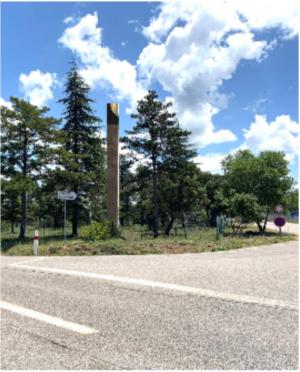Two sisters, two suns and a monument to fusion
As Site Transitoire paid homage to the Sun and the intersection of nature and art, so will its sister. The sculpture's careful angles and notches capture the Sun at certain times of the day and year, and its gold-foil tip will reflect the Sun's light from the park at one end of the city to the Cistercian abbey, Silvacane, at the other end.
But along with the connection between two monuments and two cities, Résonances will draw together two suns: the titan that burns millions of kilometres away and its little sister nestled in the womb of the ITER Project. Though the sculpture will be located about 45 km away from ITER site in Saint-Paul-lèz-Durance, Philippe's design brings ITER and La Roque d'Anthéron together.
Although the project was not commissioned by the ITER program*, the monument will be a fitting tribute to all those who have dedicated great time and effort to make the ITER Project possible. A smaller replica of the sculpture (see the simulated photo at right) will even greet visitors as they enter the ITER site.
As Résonances is funded by private financial contributions, it is possible for anyone interested in ITER or in the aesthetic and symbolic value of the sculpture to make a donation towards the creation of the monument. The artist has proposed a way to incorporate donors by name within the monument to acknowledge their contribution.
And years, even decades from now, when the tokamak burns like a microcosmic star and ITER's mission is in the past, Résonances will remain as a physical reminder of the history behind ITER, of La Roque d'Anthéron and her sister city, and of Jean-Paul Philippe's artistic vision.
*Some staff of the ITER Organization play a volunteer supporting role in the realization of "Résonances."



